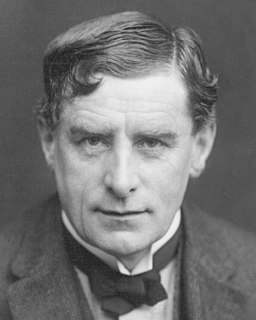In the lively cityscape of early 20th-century London, a band of artists emerged, inspired by everyday urban life. Known as the Camden Town Group, they left a profound impact on the British art scene, pushing artistic boundaries with their unique vision.
Origins of The Camden Town Group
The Camden Town Group came into existence in 1911. These artists were drawn together by a shared interest in the realities of modern life in London. They consisted of leading figures in the art scene, such as Walter Sickert, Harold Gilman, Charles Ginner, and Spencer Gore. Their joint ambition was to move away from conventional, idealized rural landscapes, aiming instead to encapsulate the essence of city life.

Key Members of The Camden Town Group
Walter Sickert, the unofficial leader, is renowned for his realistic depictions of ordinary life. His evocative paintings often focused on urban and theatrical themes, recording otherwise unnoticed aspects of life. Sickert’s commitment to illustrating the raw charm of city life was highly influential, shaping the artistic styles of his Camden Town Group contemporaries.
Another significant member, Harold Gilman, was famous for his vibrant use of colour and his detailed images of domestic interiors and portraits. Influenced by Post-Impressionism and artists like Vincent van Gogh, these factors shaped his unique style.
Franco-British artist Charles Ginner, another key member of the group, vibrantly portrayed London’s bustling life with a bright palette and an impressionistic style. In contrast, Spencer Gore was intrigued by the evolving urban landscape, often incorporating elements of Post-Impressionism and Futurism into his depictions of parks, railways, and suburban homes.
The Camden Town Group’s Artistic Approach
Unlike traditional art’s grand narratives, the Camden Town Group focused on everyday life’s rhythm. They depicted ordinary Londoners, domestic interiors, and bustling streets, highlighting the often overlooked beauty in the commonplace. Their work symbolized a shift in art, moving away from the opulent and romantic to focus on the real and authentic.
Their artistic influence was rooted in Post-Impressionism, a movement prioritising emotion and personal response over realistic representation. Taking inspiration from masters such as Vincent van Gogh, Paul Gauguin, and Paul Cézanne, they set themselves apart with their bold use of colour, vigorous brushwork, and innovative compositions.
Their frank portrayals of working-class London life and their break from conventional aesthetics, however, met with resistance from the more conservative elements of the art establishment. This opposition, coupled with internal changes, led to the group’s dissolution in 1913, and many members transitioned to the broader London Group.
Despite their brief existence, their impact was enduring. The Camden Town Group altered British art’s focus, shedding light on urban life’s vibrant realities and rich complexities. Their legacy still resonates, securing their place as pioneers of modernist art.

Beyond the Gallery: The Camden Town Group’s Impact
Frida Strindberg’s avant-garde nightclub, the Cave of the Golden Calf, was integral to the group’s history. Her appreciation for modern art, including the Camden Town Group’s work, was reflected in the club’s decor, providing a platform for these artists.
Although they held only three major exhibitions before merging into the London Group in 1913, the Camden Town Group’s impact was profound and enduring. Their paintings served as a catalyst in shifting British art’s focus towards urban life’s vibrancy.
Their influence continues to resonate in contemporary British art, with their commitment to capturing the urban landscape echoing through the ages. In their paintings, we see a city alive and pulsating with energy
London, both the muse and the canvas for the Camden Town Group, continues to celebrate their contributions. Their masterpieces, housed in the city’s prestigious institutions, provide a timeless testament to a period marked by artistic transformation.
At Tate Britain on Millbank, a vast collection of the Camden Town Group’s works allows visitors to immerse themselves in the vivid colours and innovative techniques that defined their contributions to British art. The Courtauld Institute of Art Gallery at Somerset House offers a wider context to their achievements with a varied display of British art from the period. Similarly, the Ashmolean Museum in Oxford showcases several works by the group, emphasising their national importance.
The Enduring Legacy of The Camden Town Group
The Camden Town Group’s commitment to exploring everyday life, their ambition to encapsulate the city’s spirit, and their bold embrace of modernist techniques profoundly altered the trajectory of 20th-century British art. Their influence endures, educating and engaging audiences with their powerful glimpses into the past. Despite their brief existence, they indelibly marked British art, and their legacy continues to reverberate in London’s vibrant artistic culture today.
Despite the group’s dissolution in 1913, the Camden Town Group’s influence on modern British art cannot be underestimated. These artists dared to find beauty in the ordinary, capturing the essence of city life, from the hustle and bustle of London’s streets to the quiet moments in domestic interiors. Their legacy serves as a testament to their audacious vision and their enduring impact on British art.
Their works, immortalised in some of London’s most respected galleries, continue to inspire and challenge artists and art enthusiasts alike. The Camden Town Group’s bold approach to art—highlighting the extraordinary within the ordinary—resonates in today’s vibrant art scene. Their spirit of innovation and their commitment to capturing the realities of modern urban life will continue to inspire future generations of artists.




